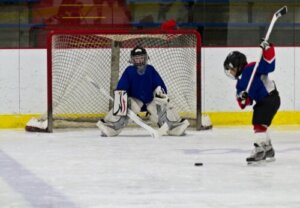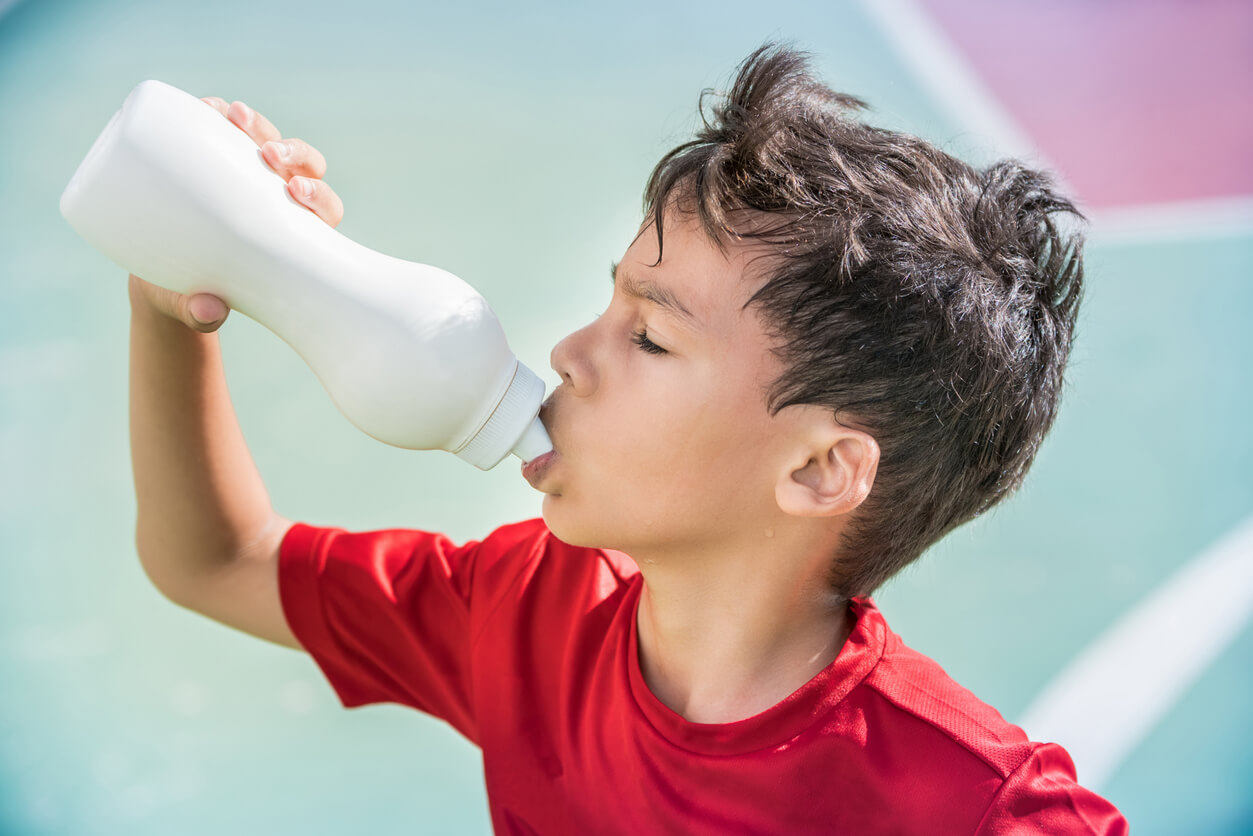How to Protect Your Child's Teeth when Playing Sports


Written and verified by the dentist Vanesa Evangelina Buffa
Injuries on the playing field and in some practices associated with physical activity can put oral health at risk. When it comes to playing sports, you should know that there’s specific care required to protect your children’s teeth from damage.
Encouraging your children to play sports helps them exercise, take care of their health, and socialize with their peers. But you must make sure that the practices are safe and take care of their oral health. Here’s how you can protect your child’s teeth to avoid damage and prevent accidents during play.
1. Minimize the use of sports drinks
When playing sports, athletes must stay hydrated to be able to continue with their routine and recover energy. Sports drinks are products created to help replenish water and electrolytes expended during activity. For this reason, it’s common for parents to offer these types of liquids to their children when they exercise.
Due to advertising and sponsorship at sporting events, these drinks are often associated with a healthy lifestyle. However, you should know that they contain a high sugar content and a level of acidity that can cause damage to children’s health. In fact, their use isn’t recommended in childhood and adolescence.
Excess sugar in sports drinks can lead to excess weight and problems associated with diabetes. In the mouth, high levels of glucose favor the proliferation of bacteria and, with it, the development of cavities. In turn, the acidity of these liquids is capable of demineralizing the enamel, leading to an increased risk of cavities and dental hypersensitivity.

2. Use a mouthguard
The practice of sports increases the risk of children and adolescents suffering trauma to their teeth and mouth injuries. But, fortunately, the use of mouthguards reduces the chances of such damage occurring. In this regard, the American Dental Association (ADA) recommends wearing a well-fitting mouthguard during sports or recreational activities to reduce the incidence and severity of oral injuries.
Their use is especially important in high-risk sports, such as contact and speed games. Also, it’s crucial to protect your child’s teeth if they have orthodontic appliances, as these attachments can cause more damage if there’s a blow to the area. Therefore, their main function is to cushion the possible blows and minimize the risk of damage and injuries.
Which mouthguard to choose to protect your child’s teeth when playing sports
To protect your child’s teeth when playing sports, you can choose between different types of mouthguards for children. Here are the possible alternatives:
- Prefabricated protectors: These are inexpensive and easily available in pharmacies. They come pre-formed, with standard measurements, and are ready to use. Their disadvantages are that they often don’t adapt or fit well in the mouth. In addition, because they’re bulky, they’re uncomfortable and make speech and breathing difficult.
- Semi-fitted or “boil and bite”: These are available in pharmacies and sporting goods stores. To use them, they must first be softened by placing them in hot water. Then, they’re placed in the mouth and bitten to take the shape of the child’s teeth. They have a better fit than standard mouthguards, although the fit isn’t perfect.
- Custom-made: These are the most recommended. These appliances are made by a pediatric dentist to fit the child’s mouth. These achieve an excellent fit and are comfortable and safe, but they’re also more expensive.
What to keep in mind
The mouthguard has to fit in the mouth and protect the teeth and gums. It must also be flexible, stable, and easy to put on and take off. In addition, it should allow oral breathing and saliva swallowing, shouldn’t cause pain, and should be comfortable for the child. If the child doesn’t feel discomfort when wearing it, it’ll be easier for them to get used to wearing it during sports practices.
To adequately protect your child’s teeth when playing sports, you should replace their mouthguard every season. Not only because of wear and tear but also because the child’s jaws are growing, teeth change, and so does the mouth.

3. Encourage the use of helmets
In addition to protecting teeth and oral structures, in some sports, it’s advisable to wear a helmet. For example, when playing football, baseball, basketball, field hockey, cycling, rock climbing, skating, and other sports that have a risk of concussion, a helmet should be worn.
There are designs that include face cages that cover the head and the entire face. The use of this type of protection is critical for children at increased risk for concussions, such as field hockey goalies, baseball catchers, and soccer players.
4. Practice good dental habits on a daily basis
Taking care of their mouths at home is also a way to protect your child’s teeth when they play sports. If you take care to keep their teeth healthy and strong, they’ll be more resistant to knocks. Daily brushing with fluoride toothpaste and flossing help maintain oral health, as does giving children a healthy, varied, and nutritious diet.
Finally, dental checkups every six months complete the care. The professional should evaluate your child’s mouth and perform the necessary cleanings or treatments to maintain oral health. It’s important to talk to your dentist about your child’s sports practice so that they can provide the proper advice and care to protect your child’s teeth.
Fair play
Beyond protection, it’s also important to teach children to play safely and responsibly. Emphasizing good sportsmanship helps avoid aggressive situations that could lead to harm and injury.
Injuries on the playing field and in some practices associated with physical activity can put oral health at risk. When it comes to playing sports, you should know that there’s specific care required to protect your children’s teeth from damage.
Encouraging your children to play sports helps them exercise, take care of their health, and socialize with their peers. But you must make sure that the practices are safe and take care of their oral health. Here’s how you can protect your child’s teeth to avoid damage and prevent accidents during play.
1. Minimize the use of sports drinks
When playing sports, athletes must stay hydrated to be able to continue with their routine and recover energy. Sports drinks are products created to help replenish water and electrolytes expended during activity. For this reason, it’s common for parents to offer these types of liquids to their children when they exercise.
Due to advertising and sponsorship at sporting events, these drinks are often associated with a healthy lifestyle. However, you should know that they contain a high sugar content and a level of acidity that can cause damage to children’s health. In fact, their use isn’t recommended in childhood and adolescence.
Excess sugar in sports drinks can lead to excess weight and problems associated with diabetes. In the mouth, high levels of glucose favor the proliferation of bacteria and, with it, the development of cavities. In turn, the acidity of these liquids is capable of demineralizing the enamel, leading to an increased risk of cavities and dental hypersensitivity.

2. Use a mouthguard
The practice of sports increases the risk of children and adolescents suffering trauma to their teeth and mouth injuries. But, fortunately, the use of mouthguards reduces the chances of such damage occurring. In this regard, the American Dental Association (ADA) recommends wearing a well-fitting mouthguard during sports or recreational activities to reduce the incidence and severity of oral injuries.
Their use is especially important in high-risk sports, such as contact and speed games. Also, it’s crucial to protect your child’s teeth if they have orthodontic appliances, as these attachments can cause more damage if there’s a blow to the area. Therefore, their main function is to cushion the possible blows and minimize the risk of damage and injuries.
Which mouthguard to choose to protect your child’s teeth when playing sports
To protect your child’s teeth when playing sports, you can choose between different types of mouthguards for children. Here are the possible alternatives:
- Prefabricated protectors: These are inexpensive and easily available in pharmacies. They come pre-formed, with standard measurements, and are ready to use. Their disadvantages are that they often don’t adapt or fit well in the mouth. In addition, because they’re bulky, they’re uncomfortable and make speech and breathing difficult.
- Semi-fitted or “boil and bite”: These are available in pharmacies and sporting goods stores. To use them, they must first be softened by placing them in hot water. Then, they’re placed in the mouth and bitten to take the shape of the child’s teeth. They have a better fit than standard mouthguards, although the fit isn’t perfect.
- Custom-made: These are the most recommended. These appliances are made by a pediatric dentist to fit the child’s mouth. These achieve an excellent fit and are comfortable and safe, but they’re also more expensive.
What to keep in mind
The mouthguard has to fit in the mouth and protect the teeth and gums. It must also be flexible, stable, and easy to put on and take off. In addition, it should allow oral breathing and saliva swallowing, shouldn’t cause pain, and should be comfortable for the child. If the child doesn’t feel discomfort when wearing it, it’ll be easier for them to get used to wearing it during sports practices.
To adequately protect your child’s teeth when playing sports, you should replace their mouthguard every season. Not only because of wear and tear but also because the child’s jaws are growing, teeth change, and so does the mouth.

3. Encourage the use of helmets
In addition to protecting teeth and oral structures, in some sports, it’s advisable to wear a helmet. For example, when playing football, baseball, basketball, field hockey, cycling, rock climbing, skating, and other sports that have a risk of concussion, a helmet should be worn.
There are designs that include face cages that cover the head and the entire face. The use of this type of protection is critical for children at increased risk for concussions, such as field hockey goalies, baseball catchers, and soccer players.
4. Practice good dental habits on a daily basis
Taking care of their mouths at home is also a way to protect your child’s teeth when they play sports. If you take care to keep their teeth healthy and strong, they’ll be more resistant to knocks. Daily brushing with fluoride toothpaste and flossing help maintain oral health, as does giving children a healthy, varied, and nutritious diet.
Finally, dental checkups every six months complete the care. The professional should evaluate your child’s mouth and perform the necessary cleanings or treatments to maintain oral health. It’s important to talk to your dentist about your child’s sports practice so that they can provide the proper advice and care to protect your child’s teeth.
Fair play
Beyond protection, it’s also important to teach children to play safely and responsibly. Emphasizing good sportsmanship helps avoid aggressive situations that could lead to harm and injury.
All cited sources were thoroughly reviewed by our team to ensure their quality, reliability, currency, and validity. The bibliography of this article was considered reliable and of academic or scientific accuracy.
- Aguilera, H. E. G., Rodríguez, E. G., & Rodríguez, F. A. C. (2022). Traumatismos dentales. Su relación con el deporte (Original). Olimpia, 19(2).
- Alsunni, A. A. (2015). Energy drink consumption: beneficial and adverse health effects. International journal of health sciences, 9(4), 468.
- Díaz-Valdés, L., & Valle-Lizama, R. L. (2021). Protectores bucales en la prevención de lesiones traumáticas dentomaxilofaciales en adolescentes durante prácticas deportivas. Archivo Médico Camagüey, 25(4), 635-646.
- Domínguez, R. P. (2020). LA IMPORTANCIA DE LA ESTOMATOLOGÍA EN EL DEPORTE. Revista Cubana de Medicina del Deporte y la Cultura Física, 7(1).
- Fernandes, L. M., Neto, J. C. L., Lima, T. F., Magno, M. B., Santiago, B. M., Cavalcanti, Y. W., & de Almeida, L. D. F. D. (2019). The use of mouthguards and prevalence of dento‐alveolar trauma among athletes: a systematic review and meta‐analysis. Dental traumatology, 35(1), 54-72.
- López Garcés, K. N. (2021). Factores predisponentes de traumatismos dentales en niños (Bachelor’s thesis, Universidad de Guayaquil. Facultad Piloto de Odontología).
- Sato, T., Fukuzawa, Y., Kawakami, S., Suzuki, M., Tanaka, Y., Terayama, H., & Sakabe, K. (2021). The onset of dental erosion caused by food and drinks and the preventive effect of alkaline ionized water. Nutrients, 13(10), 3440.
- Simulescu, V., Ilia, G., Macarie, L., & Merghes, P. (2019). Sport and energy drinks consumption before, during and after training. Science & Sports, 34(1), 3-9.
- Sood, H., Virk, J., & Pareek, A. (2021). Traumatic Injuries of Teeth: A Review. International Journal of Health Sciences, 23-28.
This text is provided for informational purposes only and does not replace consultation with a professional. If in doubt, consult your specialist.








